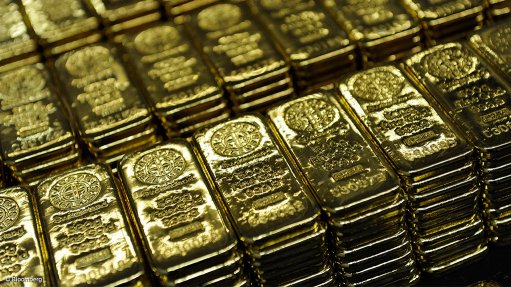
RETURNING HOME There has been a return of ‘opportunistic generalist investors’ who previously exited the gold sector between late 2011 and early 2012
Gold prices increased on an annual average basis in 2016, after declining for three consecutive years, with the price increase primarily driven by investors returning to gold.
This is according to New York-based research and consulting firm CPM Group’s ‘Gold Yearbook 2017’ report. The 260-page report, which was released last month, focuses on the macroeconomic and fundamental factors that have revived investor interest in the yellow metal and what expectations are for the rest of 2017.
Speaking during the launch of the report, CPM Group MD Jeffrey Christian noted that there had been a return of “opportunistic generalist investors” who had exited the gold sector between late 2011 and early 2012. He added that there had also been a “wave” of new investors entering the gold sector who had never previously been involved in the gold market.
Christian commented that investors had moved into gold equities and bullion “somewhat indiscriminately”. He elaborated that some investors had focused on bullion instead of equities, as they sought a purer exposure to gold in light of performance risks and global financial stability concerns.
Christian further stated that there were signs of “fatigue and disinterest” among some traditional physical gold investors and markets.
“Many ‘western investors’ in gold have focused on fears of catastrophic economic or financial failures as reasons to buy and own gold. However, these events have not occurred; hence, the investment demand and price weakness between 2013 and 2016 was reflective of disenchanted investors leaving the gold market, owing to the absence of economic collapses or hyperinflation.”
Moreover, Christian highlighted that CPM had always focused on “greed and fear” as reasons to own gold. “It is not just catastrophes that gold protects one from – it is also the day-to-day economic deterioration, volatility and uncertainty.”
He also said that, while net investment demand in 2016 of 27.4-million ounces was below the high levels seen between 2009 and 2012, it was a recovery from the reduced investor interest in recent years.
Christian remarked that mine supply continued to increase during 2016, reaching new record highs. Moreover, he pointed out that mine supply was forecast to continue rising throughout 2017, with about 16-million ounces in new capacity addition between 2011 and 2016 offsetting any loss in output from existing mines.
Meanwhile, CPM Group research director Rohit Savant commented that total supply, which included mine supply and secondary supply, increased in 2016, but was still lower than levels seen in 2012.
“The primary reason for this is the sharp reduction in secondary recovery in response to weaker prices between 2013 and 2015. Nonetheless, the level of scrap recovery stabilised in 2016 at around 30-million ounces.” He also noted that total supply was expected to continue rising during 2017, driven primarily by mine supply.
Savant stated that fabrication demand declined in 2016, after rising for three consecutive years. He elaborated that the decline was largely brought about by the increase in gold prices but also a shift in Chinese demand from gold jewellery to gold coins and bars.
“Demonetisation of various Indian rupee notes, a strengthening of the US dollar versus the domestic currencies of some of the major consumers of gold and an ongoing shift in jewellery demand trends in China and India toward owning nongold jewellery and lower carat gold jewellery were all factors that weighed on total fabrication demand for gold in 2016,” he said, adding that gold fabrication demand was estimated to have totalled 92-million ounces in 2016.
Christian pointed out that central banks remained net buyers of gold during 2016. He noted that this was the ninth consecutive year that central banks added gold to their holdings on a collective net basis.
He commented that reported net additions to central bank gold holdings reached an estimated 7.2-million ounces during 2016, which was up from the 5.3-million ounces recorded in net additions during 2015.
Christian remarked that, while some gold market participants were “excited” about how central banks as a group were buying gold again after decades of net disposals and sales, the reality was that it was a “very small number” of central banks that were actively adding gold to their reserves. Most central banks continued to focus on diversifying their foreign exchange currency reserves, instead of buying gold.
“A total of 14 central banks were net buyers of gold during 2016, with Russia, China, and Kazakhstan accounting for the lion’s share of these additions,” Christian concluded.